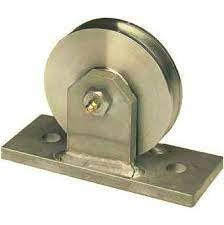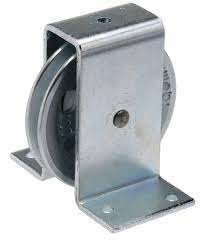Product Description
Belt pulley Tensioner Cable Machine Chain Rope Timing V- Belt Pulleys Manufacturer Industrial
pulley machine
1) V-Belt pulleys for taper bushes
SPZ
|
SPA
|
SPB
|
SPC
|
2)V-belt pulleys with CHINAMFG hub
SPZ
|
SPA
|
SPB
|
SPC
|
3) Adjustable Speed V-belt pulleys prebored and for taper bushes
| Type | Profile |
| 5VS092-1 | 10X6 SPZ |
| 5VS093-1 | 10X6 13X8 |
| 5VS108-1 | 10X6 13X8 SPZ SPA |
| 5VS120-1 | 10X6 13X8 SPZ SPA |
| 5VS138-1 | 10X6 13X8 SPZ SPA |
| 5VS159-1 | 10X8 SPA |
| 5VS180-1 | 10X8 17X11 SPA SPB |
| 5VS120-2 | 10X6 13 X8 SPZ SPA |
| 5VS138-2 | 10X6 13 X8 SPZ SPA |
| 5VS159-2 | 13X8 SPA |
| 5VS180-2 | 13X8 17X11 SPA SPB |
| 5VS200-2 | 13X8 17X11 SPA SPB |
| 5VS250-2 | 13X8 17X11 SPA SPB SPC |
/* January 22, 2571 19:08:37 */!function(){function s(e,r){var a,o={};try{e&&e.split(",").forEach(function(e,t){e&&(a=e.match(/(.*?):(.*)$/))&&1
| Certification: | CE, ISO |
|---|---|
| Pulley Sizes: | Type A |
| Manufacturing Process: | Casting |
| Material: | Iron |
| Surface Treatment: | Phosphating |
| Application: | Chemical Industry, Grain Transport, Mining Transport, Power Plant |
| Samples: |
US$ 9999/Piece
1 Piece(Min.Order) | |
|---|
| Customization: |
Available
| Customized Request |
|---|

What safety considerations should be kept in mind when using rope pulleys?
When using rope pulleys, several safety considerations should be kept in mind to ensure the well-being of individuals and the proper functioning of the pulley system. Here's a detailed explanation of the safety considerations:
1. Equipment Inspection:
Before using rope pulleys, it is essential to inspect them thoroughly for any signs of damage, wear, or malfunction. Check for cracks, deformation, sharp edges, or corrosion that could compromise the pulley's structural integrity. Inspect the attachment points, bearings, and axles to ensure they are secure and functioning properly. If any issues are detected, the pulley should be taken out of service and replaced or repaired as necessary.
2. Rope Compatibility:
Ensure that the rope used with the pulleys is compatible in terms of diameter, type, and strength. The rope should fit properly within the pulley's groove, without excessive slack or binding. Using an incompatible rope can lead to performance issues, increased wear, or even catastrophic failure. Refer to the manufacturer's recommendations for the appropriate rope specifications for the specific pulley.
3. Weight and Load Limits:
Respect the weight and load limits specified by the manufacturer for the pulley. Overloading a pulley can lead to excessive wear, deformation, or failure. Consider the combined weight of the load, the forces exerted during movement or lifting, and any potential dynamic loads. Ensure that the pulley and its associated components, such as anchor points and ropes, are rated to handle the expected loads safely.
4. Proper Installation:
Ensure that the pulleys are properly installed and securely attached to the anchor points or mounting systems. Follow the manufacturer's instructions for correct installation techniques, such as using appropriate connectors, carabiners, or knots. Improper installation can lead to pulley slippage, unexpected movement, or detachment, compromising the safety and functionality of the system.
5. Redundancy and Backup Systems:
In critical applications or high-risk scenarios, consider incorporating redundancy and backup systems. This might include using multiple pulleys in parallel or establishing secondary anchor points. Redundancy helps mitigate the risk of a single point of failure and enhances the overall safety and reliability of the pulley system.
6. Proper Use of Personal Protective Equipment (PPE):
When using rope pulleys, ensure that the appropriate Personal Protective Equipment (PPE) is worn. This may include helmets, harnesses, gloves, and eye protection, depending on the specific activity and the associated hazards. PPE helps protect against potential falling objects, impacts, abrasions, or other risks associated with the use of pulleys.
7. Training and Competency:
Ensure that individuals operating the pulley system have received adequate training and possess the necessary competency for the specific activities. Proper training should cover topics such as pulley operation, rope handling techniques, safety procedures, and emergency response protocols. Competent individuals should be able to assess risks, make informed decisions, and respond effectively to any unforeseen circumstances that may arise during pulley operations.
8. Regular Maintenance and Inspection:
Implement a regular maintenance and inspection program for the pulley system. This includes periodic inspection of the pulleys, ropes, connectors, and anchor points. Lubrication of the pulley bearings, as recommended by the manufacturer, can help maintain their smooth operation. Regular maintenance helps identify and address any potential issues or wear before they compromise the safety and performance of the pulley system.
9. Environmental Considerations:
Take into account the environmental conditions in which the pulley system will be used. Factors such as temperature, humidity, exposure to moisture, or corrosive substances can affect the performance and lifespan of the pulleys and associated components. Consider using pulleys with appropriate corrosion resistance or protective coatings when operating in harsh environments.
10. Emergency Preparedness:
Have an emergency response plan in place and ensure that all individuals involved in the pulley operation are familiar with it. The plan should include procedures for rescuing individuals, addressing equipment failures, and handling unforeseen emergencies. Regular drills and practice sessions can help reinforce emergency preparedness and enhance the ability to respond effectively in critical situations.
In conclusion, keeping these safety considerations in mind when using rope pulleys is crucial for ensuring the well-being of individuals and the proper functioning of the pulley system. Proper equipment inspection, rope compatibility, adherence to weight and load limits, correct installation, redundancy, PPE usage, training, regular maintenance, environmental considerations, and emergency preparedness all contribute to a safe and reliable pulley operation.

How do rope pulleys play a role in industrial applications, such as material handling?
Rope pulleys play a significant role in industrial applications, particularly in material handling processes. Here's a detailed explanation of their role in such settings:
1. Lifting and Moving Heavy Loads:
Rope pulleys are commonly used in industrial settings to lift and move heavy loads. By utilizing a combination of fixed and movable pulleys, mechanical advantage is achieved, allowing workers to lift and move loads that would otherwise be too heavy to handle manually. This is especially useful in industries such as construction, manufacturing, and logistics, where large and heavy materials or equipment need to be transported or positioned.
2. Load Distribution:
In material handling applications, it is often necessary to distribute the load across multiple points to ensure stability and safety. Rope pulleys are employed in systems like block and tackle setups to evenly distribute the load between multiple ropes and pulleys. This helps in maintaining balance, reducing the strain on individual ropes, and ensuring that the load is handled securely. Load distribution is particularly crucial when dealing with irregularly shaped or fragile items that require careful handling.
3. Directional Changes:
Rope pulleys are used to change the direction of the force applied to the rope. In industrial applications, this is valuable for redirecting materials or equipment along a desired path. By incorporating pulleys at strategic points, workers can guide loads through complex routes, around obstacles, or through confined spaces. The ability to change the direction of movement enables efficient material flow, optimizing productivity and minimizing the need for manual handling in challenging environments.
4. Height Adjustment:
In industrial settings, there are often requirements to adjust the height of equipment or platforms. Rope pulleys, combined with mechanisms like counterweights or winches, are utilized to facilitate smooth and controlled height adjustment. This is commonly seen in applications such as theater rigging, where stage sets or lighting equipment need to be raised or lowered, or in warehouses where adjustable platforms are used for loading and unloading operations.
5. Safety Considerations:
Rope pulleys play a crucial role in ensuring safety in industrial material handling. By utilizing appropriate pulley systems and adhering to safety guidelines, the risk of accidents and injuries can be minimized. Pulleys with self-locking mechanisms or progress capture features are often employed in applications where loads need to be held securely in position, preventing accidental slippage or release.
6. Ergonomics and Efficiency:
Efficient material handling is essential in industrial operations to optimize productivity and reduce strain on workers. Rope pulleys help improve ergonomics by reducing the physical effort required to move heavy loads. By leveraging the mechanical advantage provided by pulley systems, workers can perform tasks more easily and with less risk of fatigue or injury, leading to increased efficiency and productivity.
In summary, rope pulleys play a vital role in industrial applications, especially in material handling. They enable the lifting and movement of heavy loads, assist in load distribution, facilitate directional changes, allow for height adjustment, enhance safety measures, and contribute to ergonomic and efficient operations. By utilizing appropriate pulley systems, industrial processes can be streamlined, productivity can be enhanced, and the well-being of workers can be prioritized.

What types of ropes or cables are typically used with rope pulleys?
Rope pulleys can accommodate various types of ropes or cables depending on the specific requirements of the application. Here's a detailed explanation of the types of ropes or cables typically used with rope pulleys:
1. Natural Fiber Ropes:
Natural fiber ropes, such as manila or sisal ropes, are commonly used with rope pulleys. These ropes are made from natural materials, offering good grip and flexibility. They are suitable for applications where the load is not excessively heavy and where some stretching or elongation is acceptable. Natural fiber ropes are often used in recreational activities, gardening, and general-purpose lifting tasks.
2. Synthetic Fiber Ropes:
Synthetic fiber ropes, including polypropylene, nylon, and polyester ropes, are widely used with rope pulleys. These ropes offer excellent strength, durability, and resistance to abrasion and weather conditions. Synthetic fiber ropes are available in different grades and constructions, allowing users to select the appropriate rope based on the load capacity and specific environment. They are commonly used in industries such as construction, shipping, and recreation.
3. Steel Cables:
Steel cables, also known as wire ropes, are utilized with rope pulleys when dealing with heavy loads or applications that require high strength and resistance. Steel cables consist of multiple strands of steel wire twisted together, providing exceptional tensile strength and durability. They are often used in construction, mining, rigging, and industrial lifting operations. Steel cables offer superior resistance to corrosion and can withstand heavy loads and harsh environments.
4. Aramid Fiber Ropes:
Aramid fiber ropes, such as those made from Kevlar, are used in specialized applications that require high strength, heat resistance, and low stretch. Aramid fiber ropes are lightweight yet extremely strong, making them suitable for tasks such as industrial lifting, aerospace, and military operations. These ropes offer excellent resistance to chemical degradation and are often preferred in environments where other materials may not perform optimally.
5. Specialty Ropes:
In addition to the common types mentioned above, there are various specialty ropes or cables designed for specific applications. For example, static ropes or static kernmantle ropes are used in rope access, rock climbing, and rescue operations where low stretch and high strength are crucial. Dynamic ropes are specifically designed for applications that involve absorbing energy, such as climbing falls. Specialty ropes are often engineered with specific properties to meet the unique demands of their intended use.
It's important to note that the selection of the appropriate rope or cable for a rope pulley system depends on factors such as the load capacity, environmental conditions, desired stretch or elongation, and safety requirements. Users should consult the manufacturer's recommendations and consider the specific needs of their application to ensure the proper selection and use of ropes or cables with rope pulleys.


editor by CX
2024-05-09











